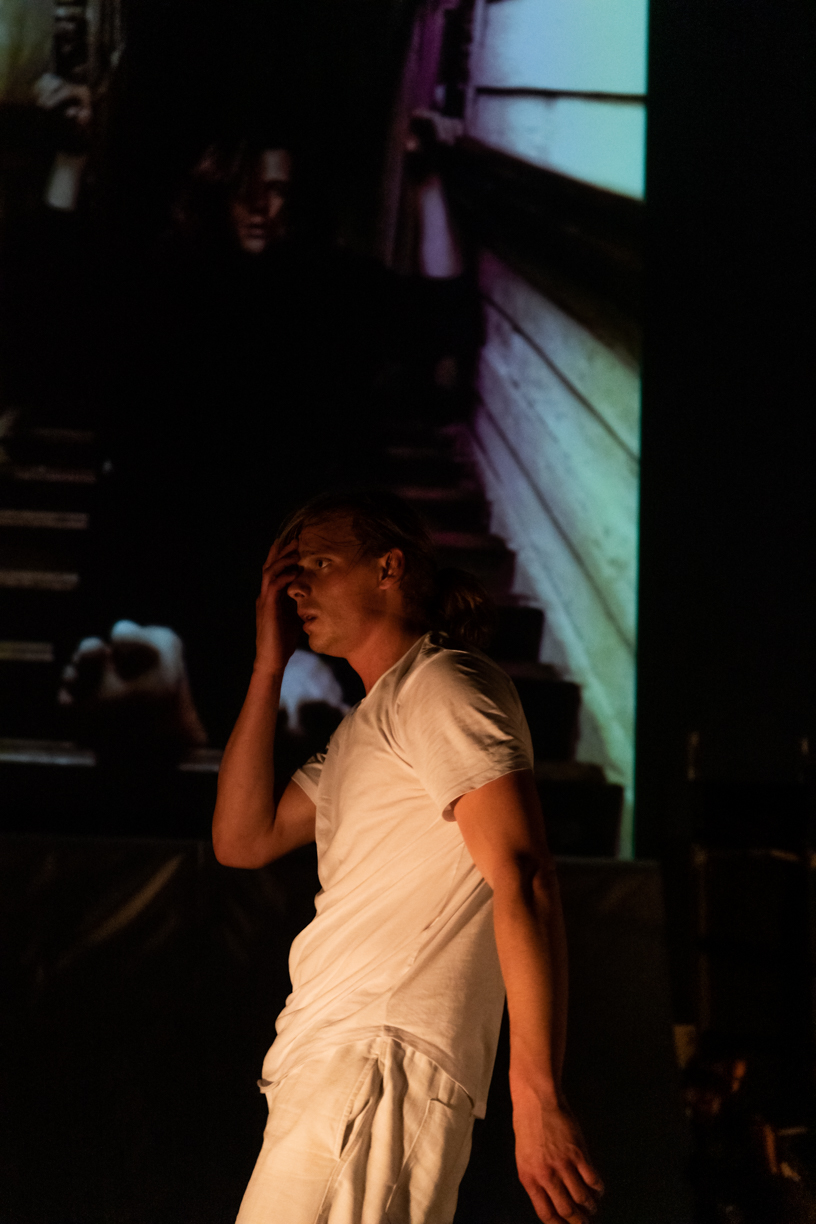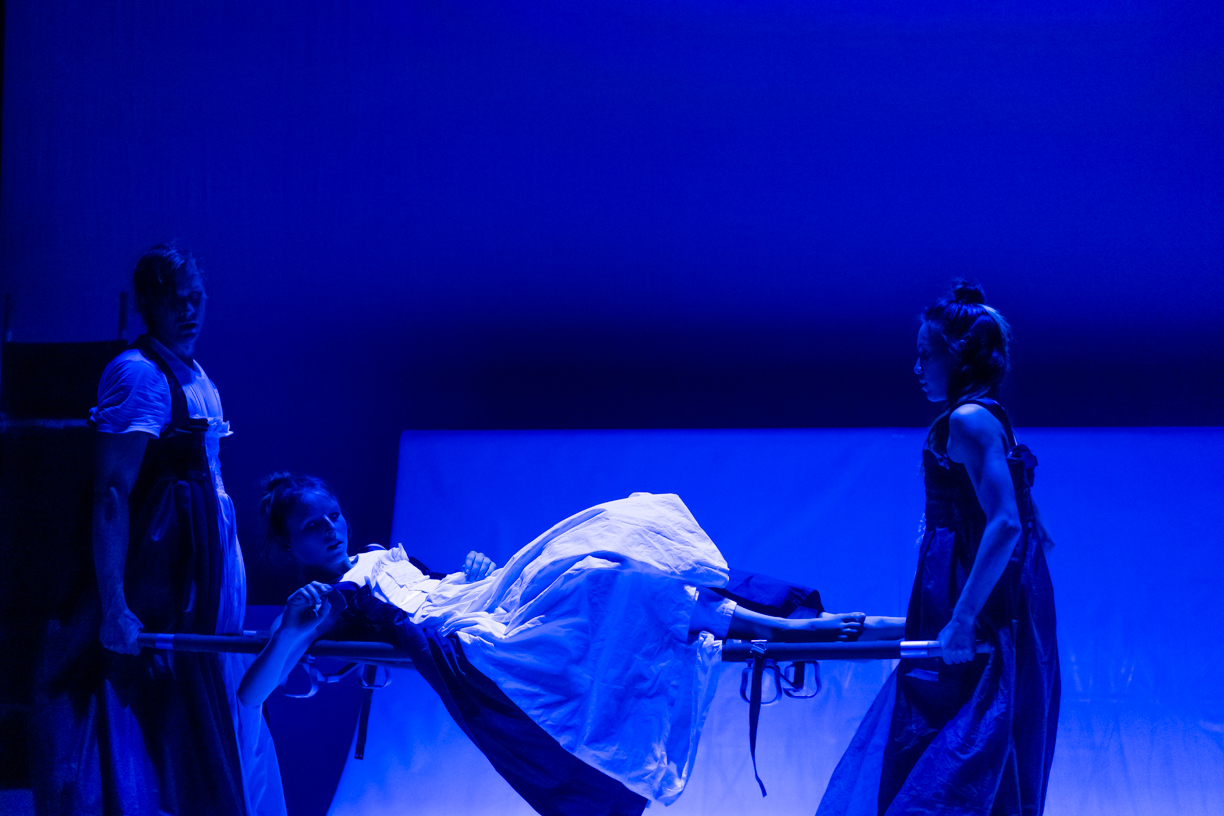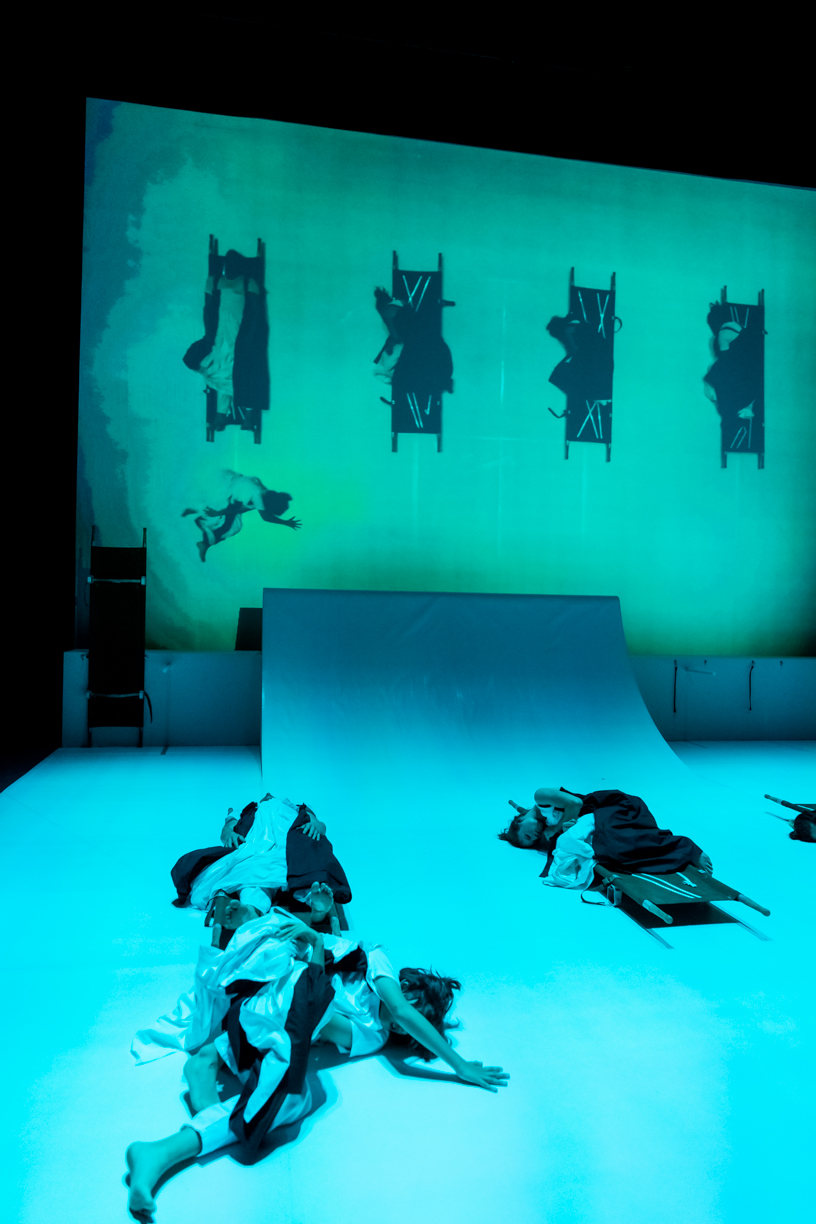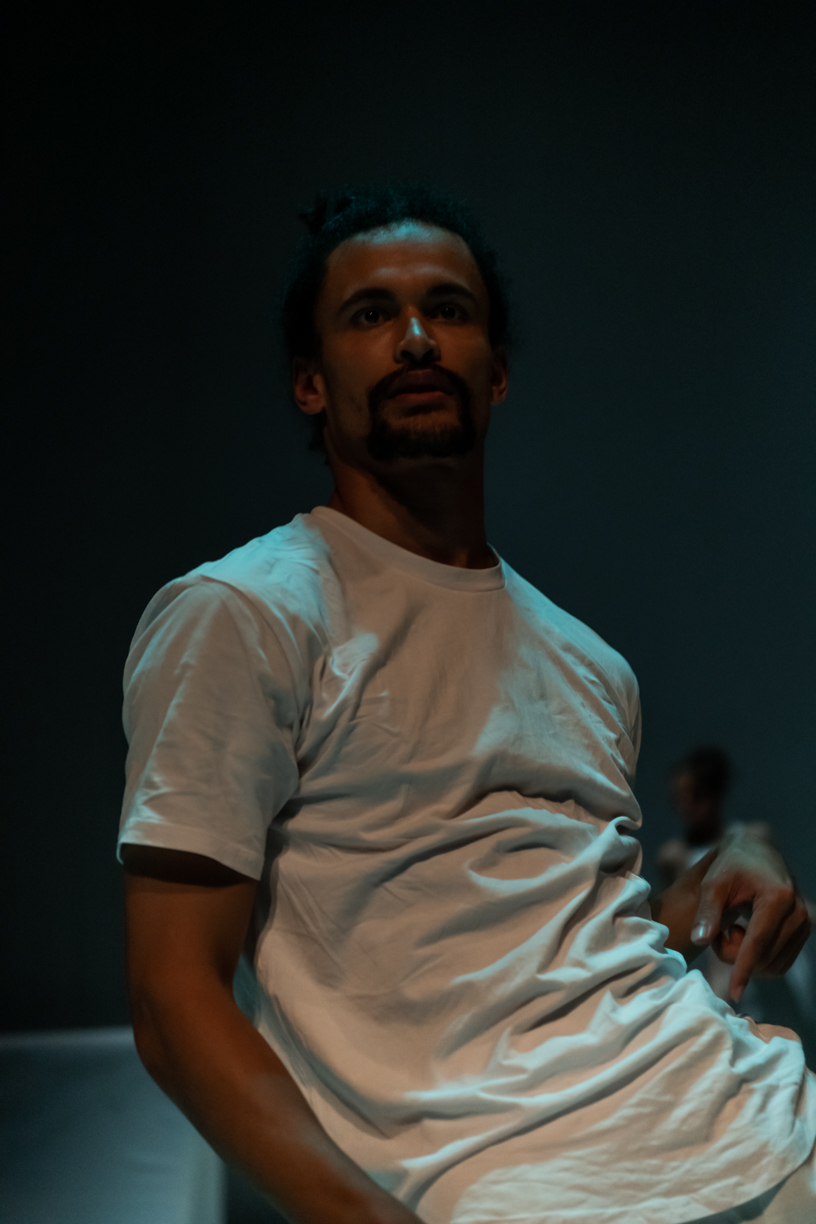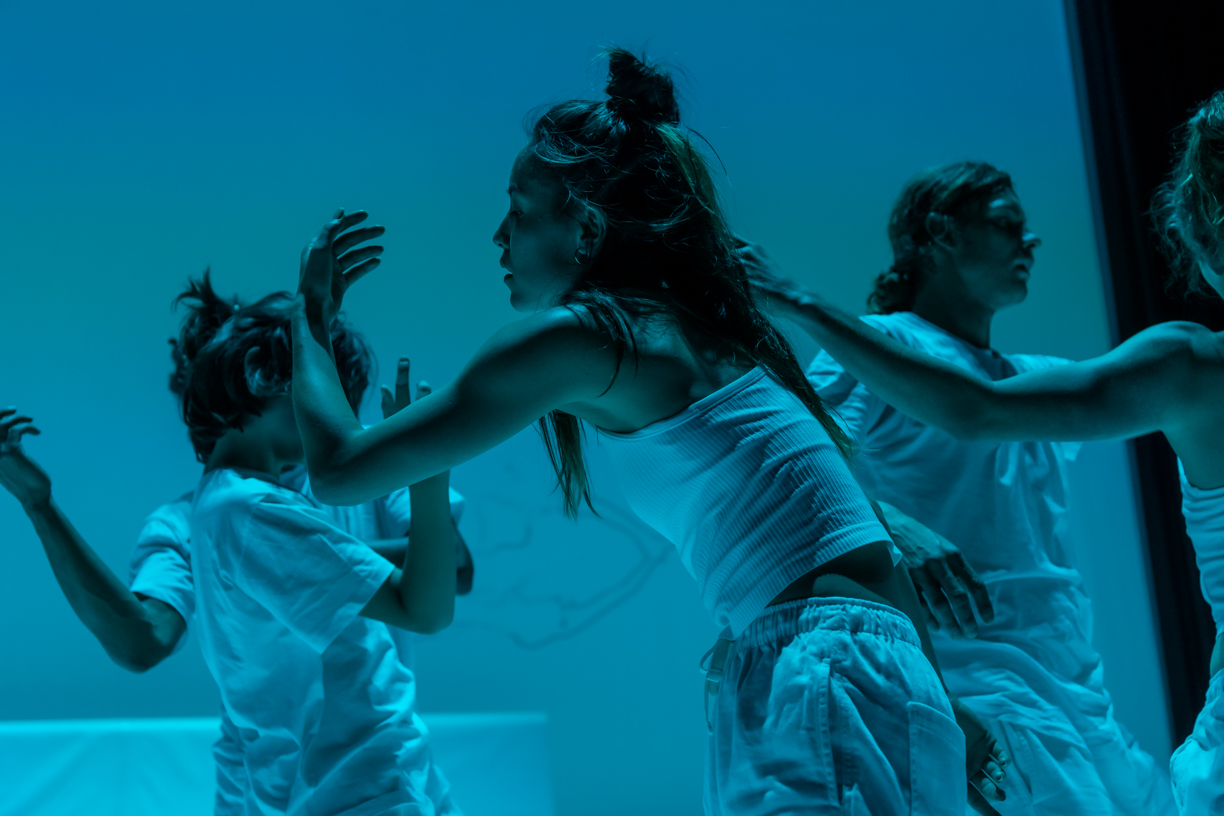The transmutation of experience from Elsewhere.
Nancy Mauro-Flude
Sneak preview here:
Review | Dance Theatre at the Theatre Royal Studio Theatre
Great Southern Dance (GSD) is a newly minted company on the Tasmanian performing arts landscape. Its first live production Human Ba La La is a contemporary dance work exploring how place and site can be simulated through the choreography. The dancer’s ability to recall perceptual states through nuanced kinetic action advance the atmosphere of transporting somewhere beyond onto the stage. At times give the impression that we had travelled back to an era burdened with captivity…
GSD engages in intensive dramaturgical research, conducting fieldwork throughout the island, including amongst historical sites such as Female Factory and Port Arthur Historic Site. The choreographic methods broaden the dominant procedures of exploring the politics of memory into potentials through the moving process and alluding to a shared history of frontier violence.
This innovative dance examination of critical heritage demonstrates how time is by no means linear and generates awareness of how we may look to the past and experience it anew. SGD offers an alternative to the battles of memory witnessed in conventional analysis of heritage, as a fixed chronicle or simple nostalgia. Too often, eulogies instrumentalise commemoration and reinscribe imperialism.
In contrast, HBLL delivers new ways for audiences to experience how difficult cultural heritage can be remedied through performance. Bott talks of how dancers’ “nervous systems respond to different environments, historical and natural ones: terrain that is built and terrain that is not”. Conceivably in a bid to enable the broader cultural community and social imaginary to reconsider what is a problematic cultural legacy for many. This resonates with recent debates on the politics of historical memory initiatives that call for an engagement with intersectional issues in theory and practice. GSD convincingly addressed the many ways complex collective memory can be expressed corporeally. Because memory helps map out new possibilities for the future.
At other moments they emerge and awaken, the dancers reveal movements and sensations of awakening and sleeping. Crawling, jumping, falling, snuggling, throwing, joyous abandon, and claustrophobia. The stage is cradled by a gigantic concave slip, a mise en scene permitting performers to travel through a manifold.
As the work progresses, the rolling and tumbling through an imagined time capsule command the audience’s perceptual acuities to snap into alert. In the humdrum rituals of daily life, where time seems to stand still, dancers slide into another dimension.
A choreography connecting body, site and country sometimes feels like the audience is in situ and carried to another place. Prominent in its dramaturgical role as a cathartic integration throughout the work, Artistic Director Felicity Bott tells of this “’ metaphoric ladder’, of our ways of feeling about ourselves, others in the world: responder, proposer, player, loser, dreamer, fixer, relator …”.
The entire review of ‘Human Ba La La ‘ by Great Southern Dance is forthcoming in Memory Palace an online journal featuring new critical writing about Tasmanian arts and culture.
Human Ba La La (HBLL) by Great Southern Dance (GSD)
Theatre Royal Hobart Studio Theatre April 1-9, 2022
Viewed Sat 9 Apr 2022 7:00 pm
Artistic Director
Felicity Bott
Co-Direction & Design
Paul Wakelam
Dancers Alya Manzart, Trà Mi Dinh, Gabrielle Martin, Rob Alejandro Tinning
Filmmaking/Lighting Design
Nicholas Higgins
Dramaturgy
Christine Best
Composition/Sound
Dean Stevenson
Technical Production
Brendan Veronese
Ludovic Vilbert
Antonio Nicasio
